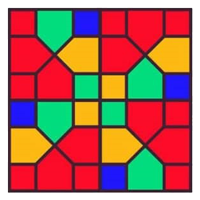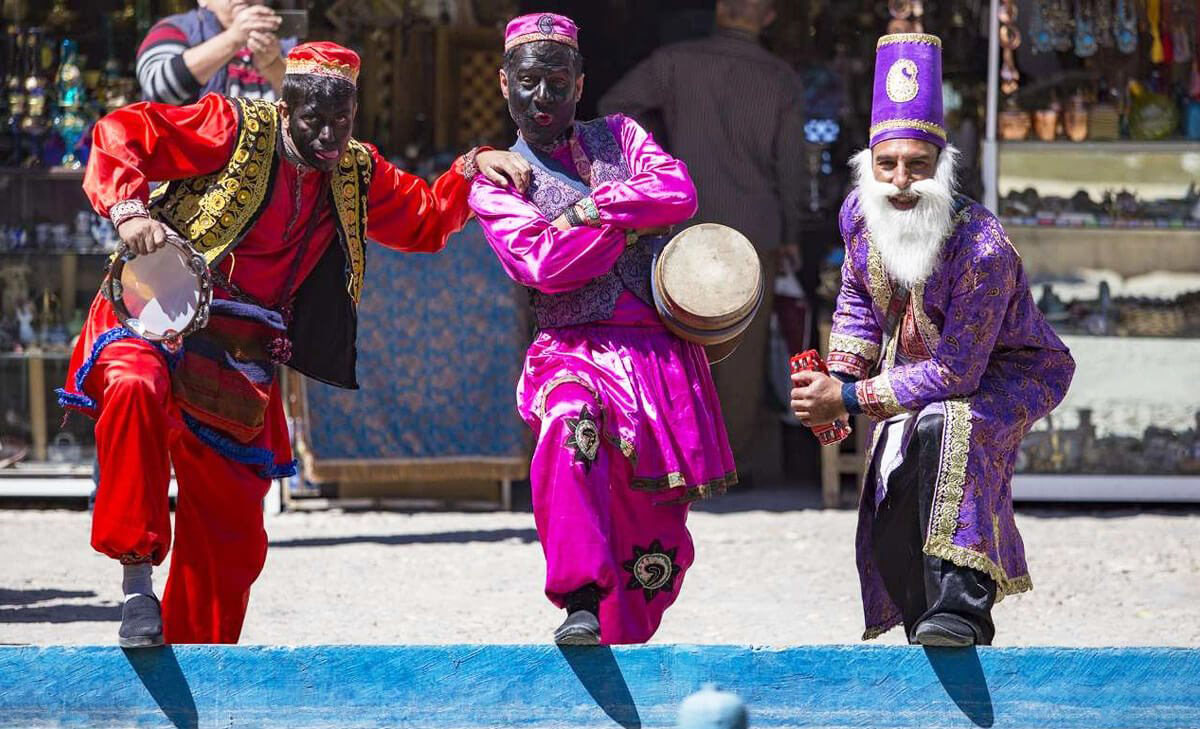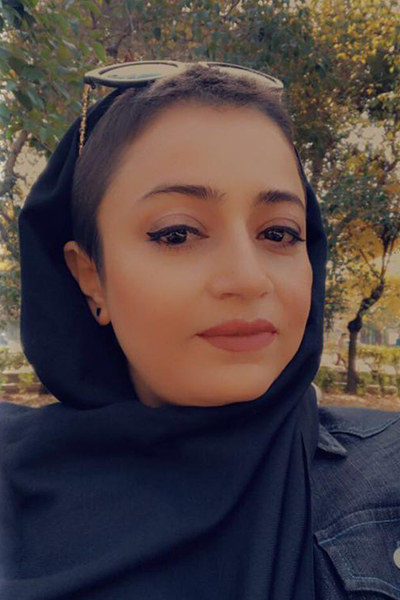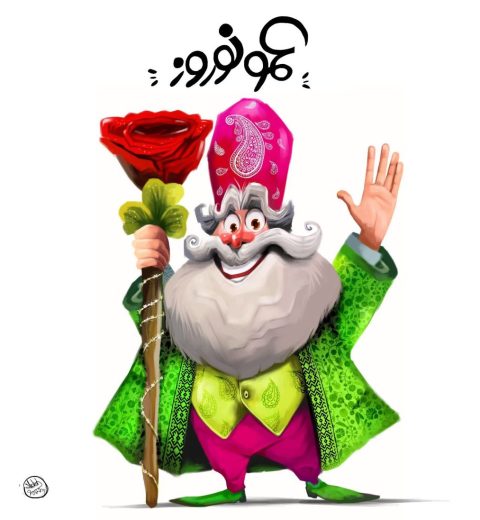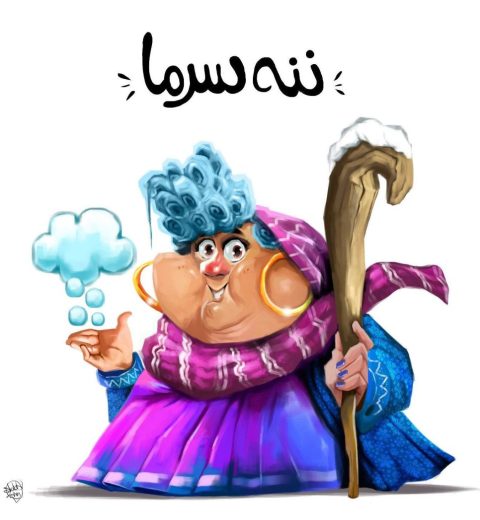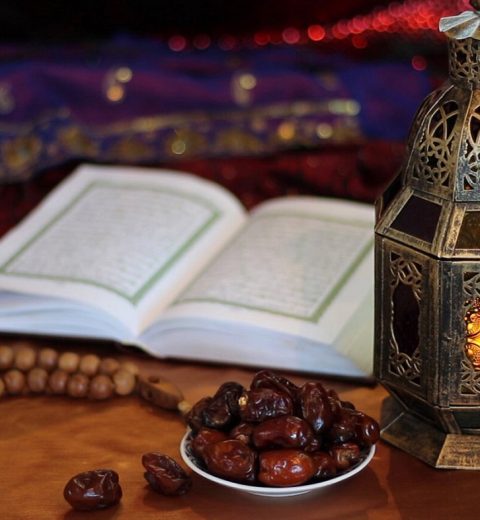Haji Firuz is one of the oldest and most well-known symbols of Nowruz in Iranian culture. With his blackened face, red outfit, tambourine in hand, and cheerful songs, he appears in the streets every year near Nowruz, spreading joy and announcing the arrival of spring and the renewal of nature.
Historical Roots
The origins of Haji Firuz trace back to ancient Persian rituals. Some scholars believe that he is connected to Mithraism, where a symbolic figure with a soot-covered face would announce the end of winter and the arrival of spring. Another theory links him to Zoroastrian temple servants, who acted as messengers of Nowruz.
Some researchers also associate Haji Firuz with Siavash, a legendary Persian hero. According to this myth, Siavash, who was unjustly killed, returns to life each spring, and He symbolizes his resurrection, bringing light and happiness to the people.
Why is Haji Firuz’s Face Black?
One of Haji Firuz’s most distinctive features is his blackened face, which has different interpretations. Some believe it symbolizes a return from the world of the dead and a rebirth. In ancient times, fire temple workers had soot-covered faces, representing enlightenment and renewal. Some theories also associate it with past traditions of slavery, but in reality, Haji Firuz is primarily a bearer of joy and celebration.
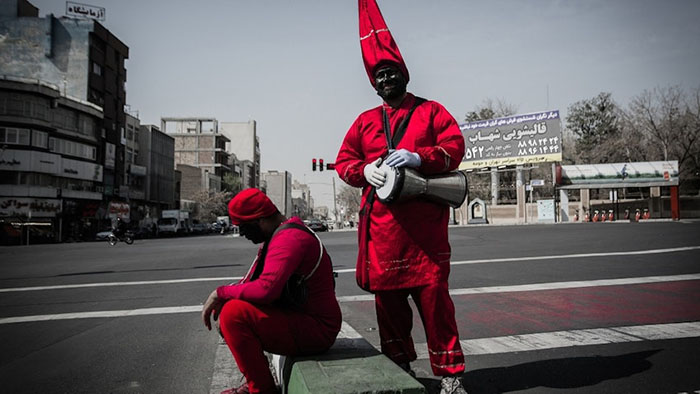
Haji Firuz In Modern Culture
Today, Haji Firuz remains an integral part of Nowruz celebrations. In the final days of the Persian year, he appears in the streets, dancing and singing to spread the festive spirit. One of his famous chants is:
“O my master, sambeleh beleh kem!
O my master, life is but a thread!
Isn’t it funny?!”
He brings warmth and joy to the Nowruz festivities, making the holiday even more vibrant.
Haji Firuz is one of the most ancient symbols of Nowruz, deeply rooted in Persian traditions and beliefs. He represents joy, the arrival of spring, and renewal. Despite the passage of time, he remains a beloved figure in Iranian culture, continuing to spread happiness and festive spirit every year.
